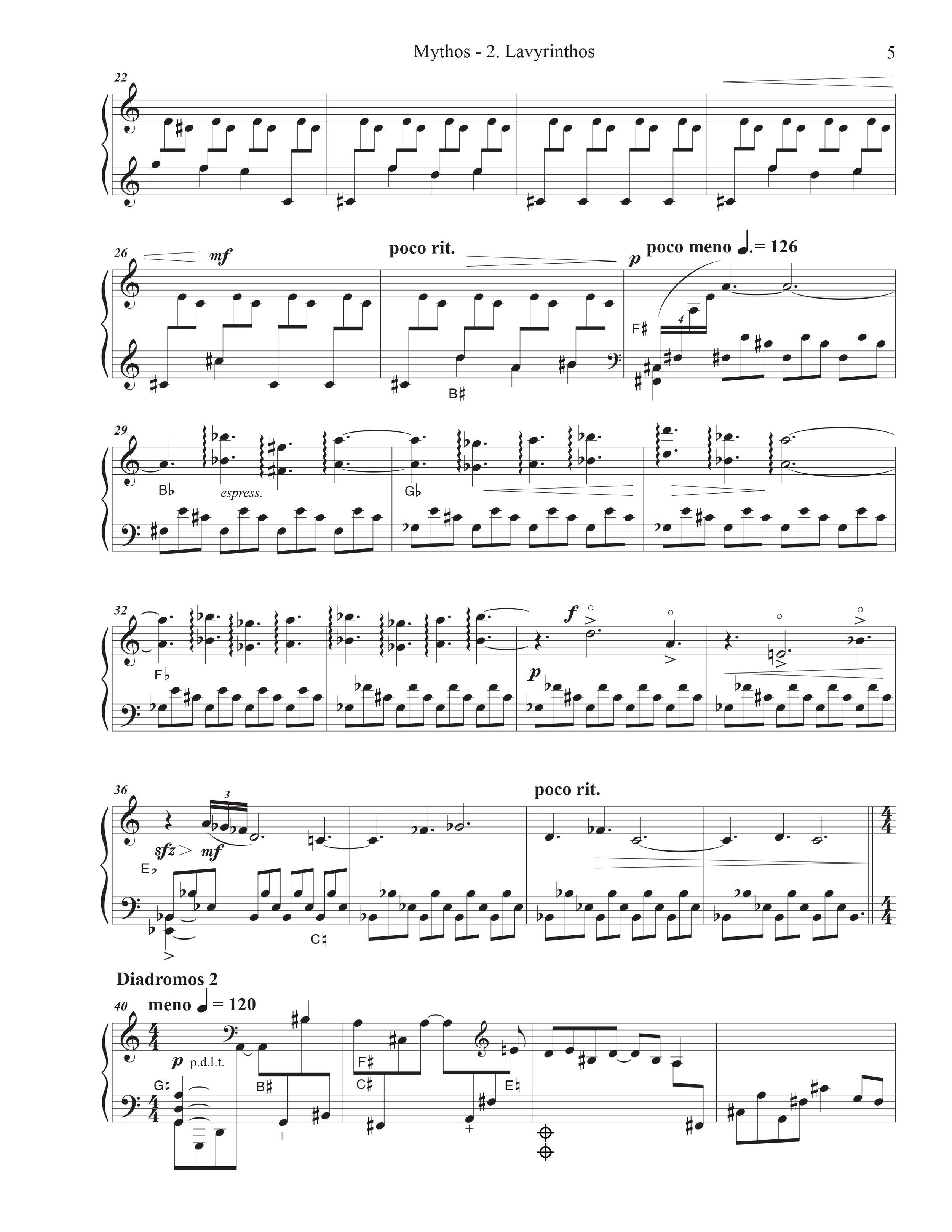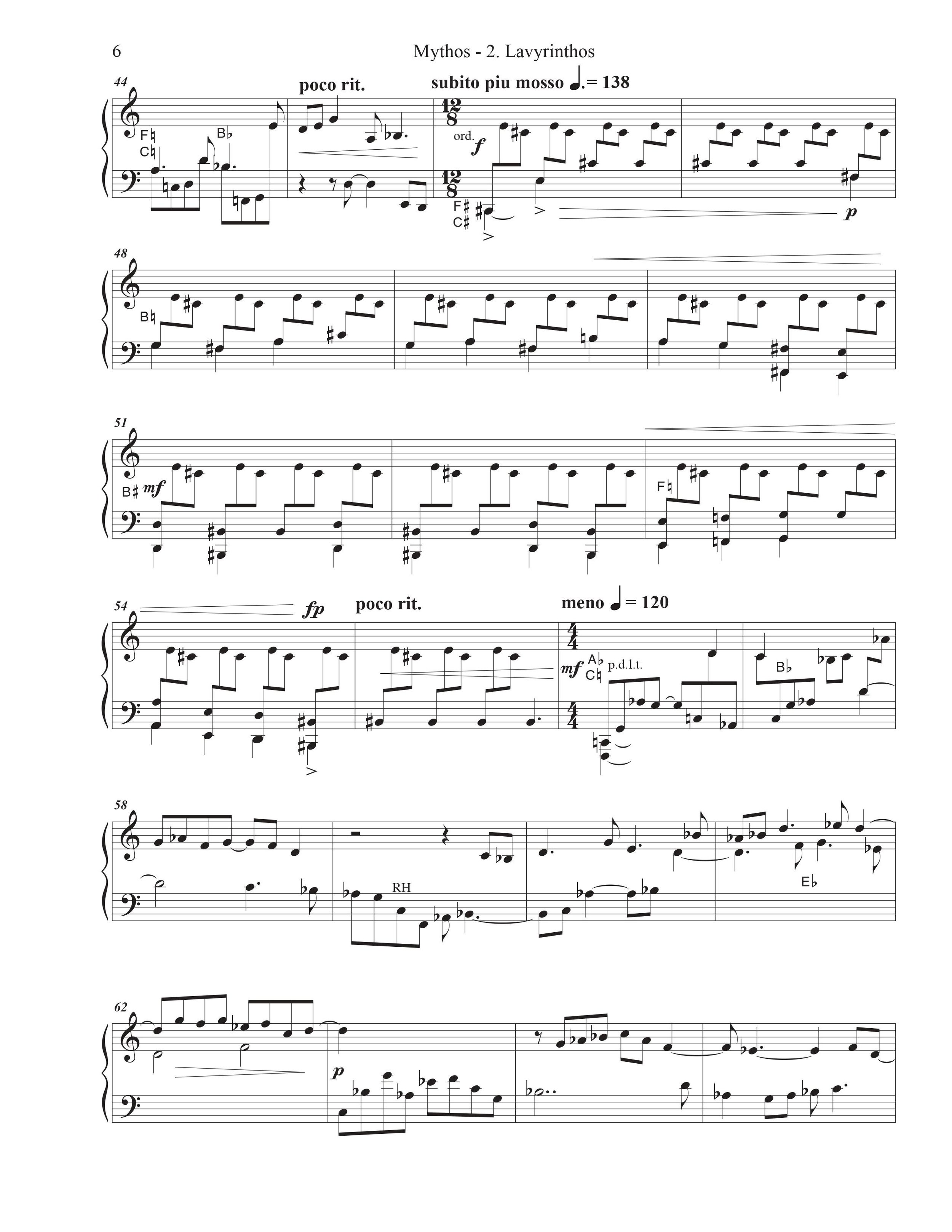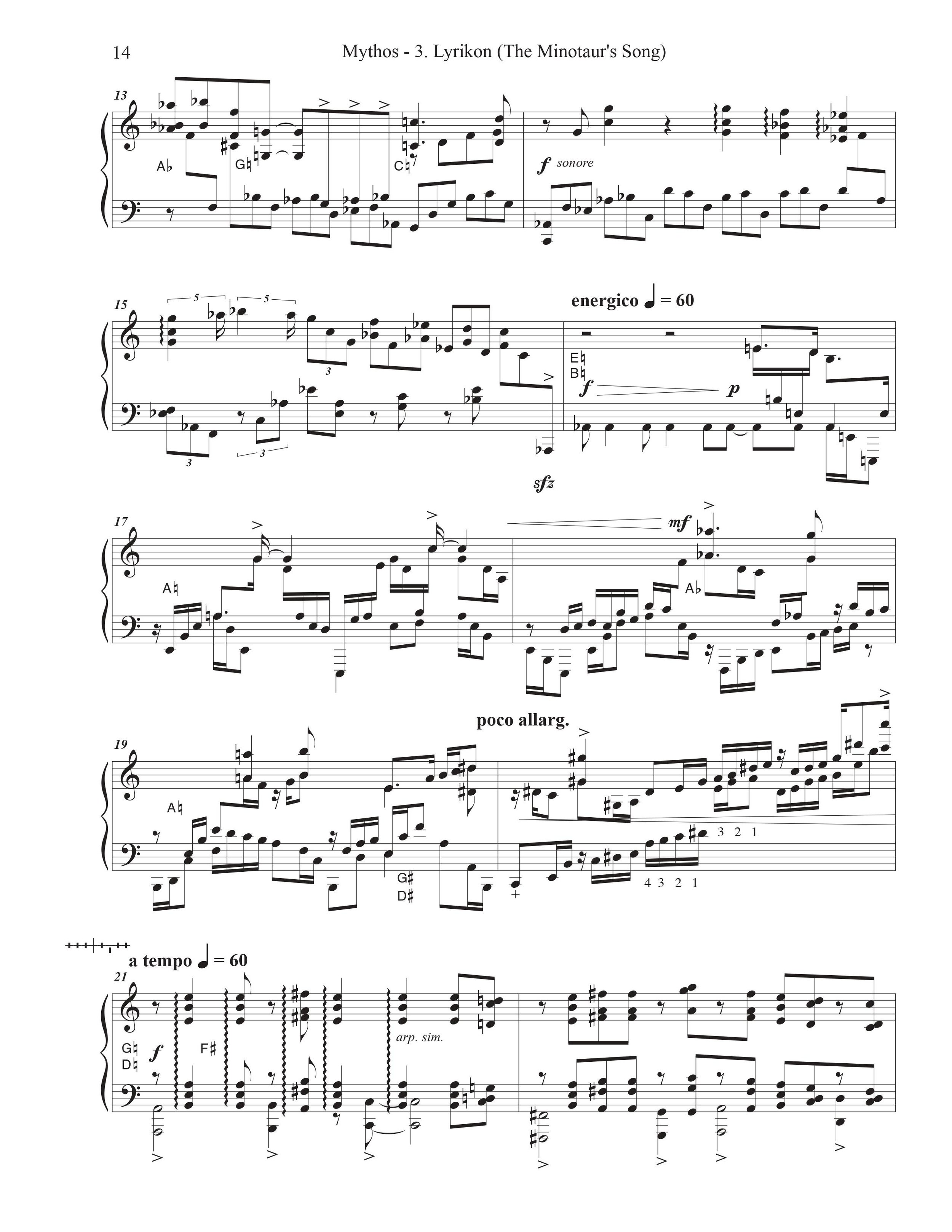Mythos (2020)
Duration: 15:00 minutes
Instrumentation: solo harp
Premiere: March 22, 2022 at the University of South Florida in Tampa, FL by Emily Levin, harp
Notes:
Mythos is based on the story of Theseus and the Minotaur. In the original tale, the Minotaur was a monster – half-man, half-bull – who lived in an elaborate labyrinth kept by the king of Crete, Minos. King Minos ruled Athens from across the sea and demanded they send a tribute to him every nine years: seven young men and seven young women who were put into the labyrinth for the Minotaur’s prey. Theseus, the Athenian hero of the story, was sent to Crete as part of this tribute, but instead managed to kill the Minotaur, and then retrace his steps out of the labyrinth (with the help of a string given to him by Ariadne, King Minos’ daughter). I became fascinated with this story and also by Jorge Luis Borges’ 1947 story La casa de Asterión. Borges puts a twist on the standard myth, telling the story from the Minotaur’s point of view, as a misanthropic loner, living out his seemingly endless days in his home of seemingly endless corridors and rooms. The Minotaur marks time according to the sacrificial offerings and waits for deliverance at the hands of his “redeemer.” At the end the of the story, the perspective shifts abruptly to Theseus: “Would you believe it, Ariadne?...The minotaur hardly put up a fight.”
Mythos is in three movements. First, a brief, improvisatory “Prologos” sets the atmosphere, introducing fragments of music that will reappear in the next two movements. “Lavyrinthos” is a musical depiction of Theseus running through the twisting paths of the labyrinth. In this movement, the structure of “turns” – shifts in harmony, or transitions between musical ideas – follows the structure and proportion of a classical seven-course labyrinth, a design found on coins and other artefacts from over two millennia ago. This movement ends at the center of the labyrinth, where I imagine a brief pause as Theseus and the Minotaur encounter each other, before Theseus dispatches the Minotaur with a single blow. The final movement “Lyrikon” is an imagined song from the Minotaur’s perspective. Since the Minotaur is dead, in my mind, the only way for its voice to be heard is through the instrument itself. So, the harp becomes a lyre – not formed from the entrails of Apollo’s sacred cow, as another story goes, but from the body of the slain Minotaur.

















